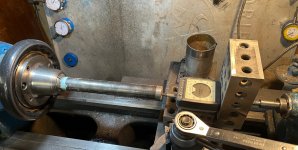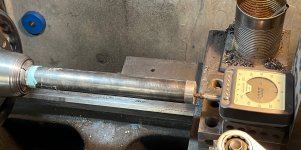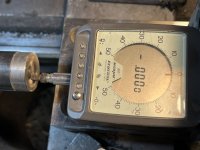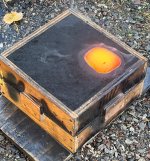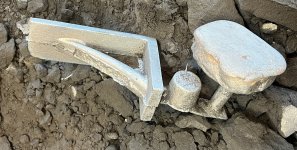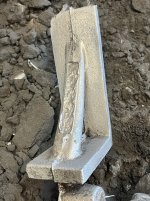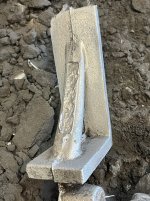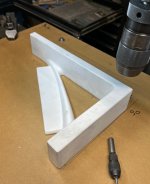While making os expansion observations as detailed in a parallel thread I have also been making some progress on the match plate for the metrology angle plate casting that should be cast next week---assuming the weather really does get out of the low teens and the 12" of snow melts.
Making the match plate for the pattern has been the crucial step and one that I approach with caution as screwing up a pattern that has been filled, sanded, filed and painted to as close as possible to perfection would make for a really crappy day.
The key is to make registration holes in the pattern that allow mirror images of the pattern to be in very close register on the top and bottom of the match plate. to establish registration I used 1/8" dowels carefully located in each half of the pattern with corresponding through holes made in the plate. (I use 3/4" sign board plywood for the plate as it is made to high standards and has a hard smooth face. It is not cheap, but it is worth it.)
Here are a few pics:
The holes in the pattern pieces and in the plate are made with the mill so that they can be accurately located. I predrill the holes and finish them to size and straightness with an end mill. You can see a large squatty pin in the mid upper portion of the first pic. It is a registration pin for the cope portion of the flask. The flask halves must register accurately with the plate and, after packing with sand, have to register just as accurately with each other. So, a strategy similar to the one used to register the pattern pieces permanently to the plate is used to temporarily register the flask to the plate as it is packed.
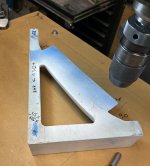
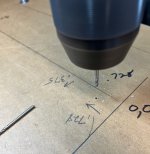
Whoa! They fit.
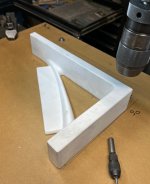
Here is a bit more detail on the flask registration pins.
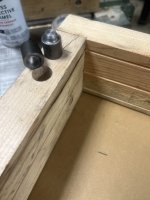
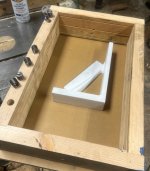
The flask sides and the plate are through bored precisely on 14" centers and pins and sockets permanently fixed in the holes so that the flask-plate-flask assembly is in good registration and then the flask-flask assembly is in good registration.
I have also got the core box almost done. More on that later.
This afternoon I'll be gluing the pattern pieces to the plate and making a micro fillet at the junction of the pattern pieces to the plate. Slow, fiddly work.
Denis


